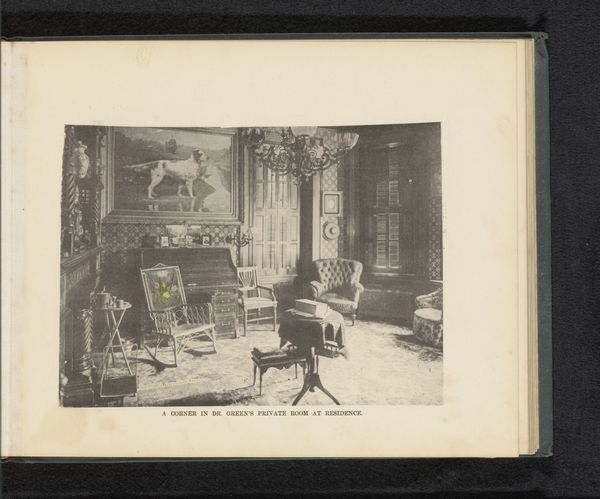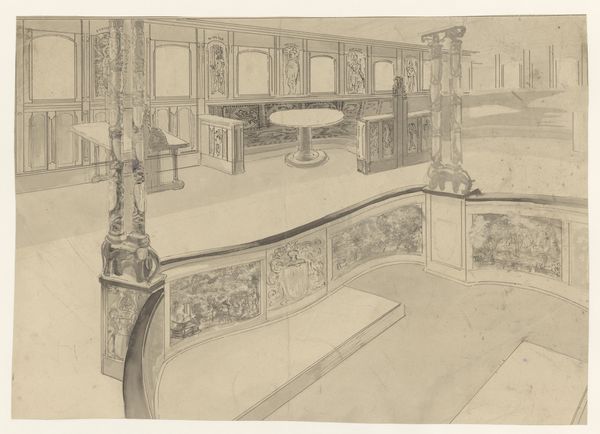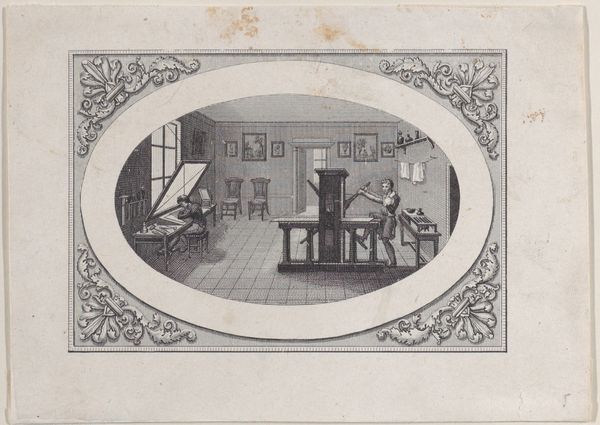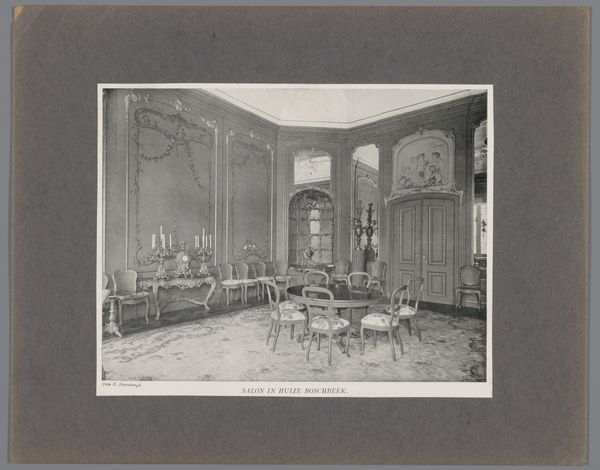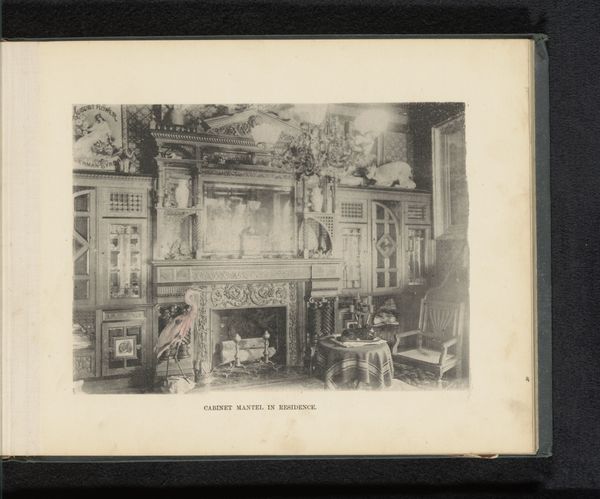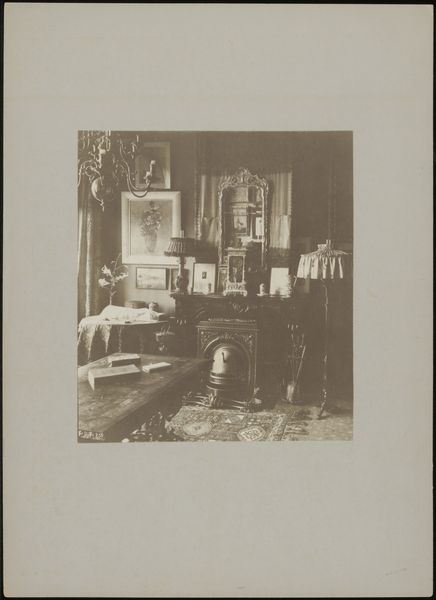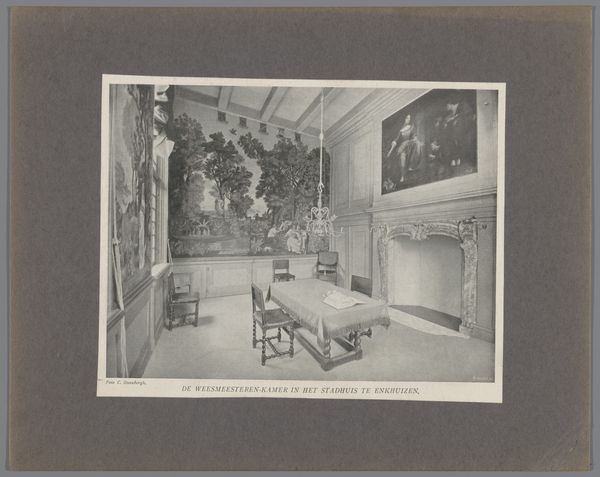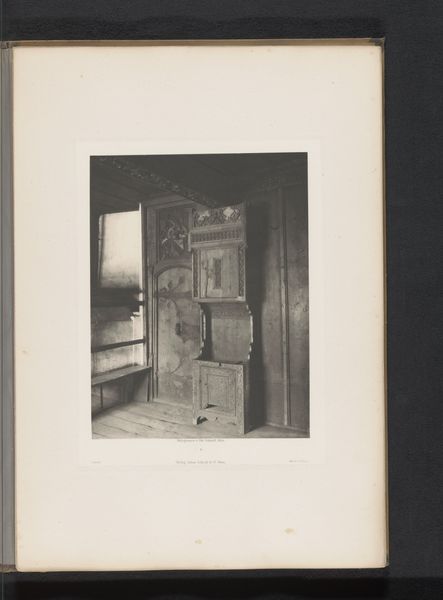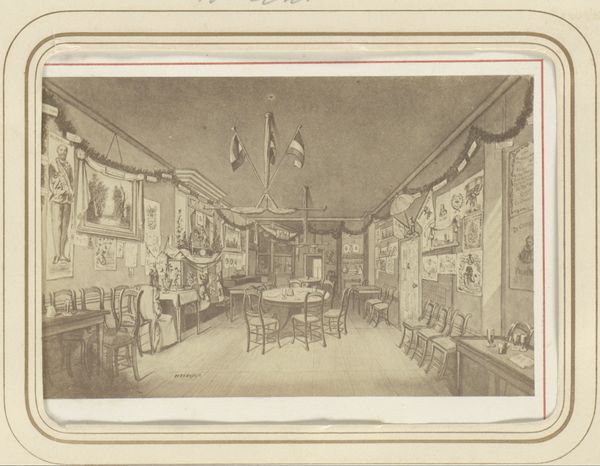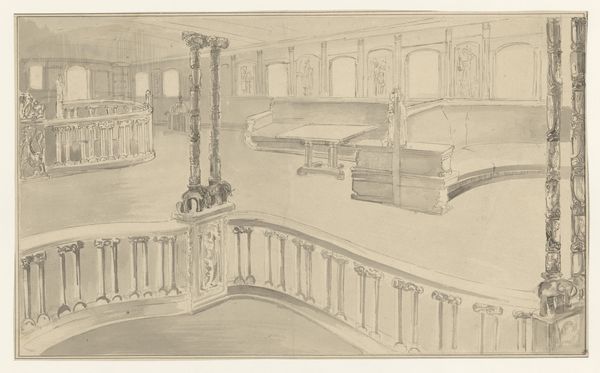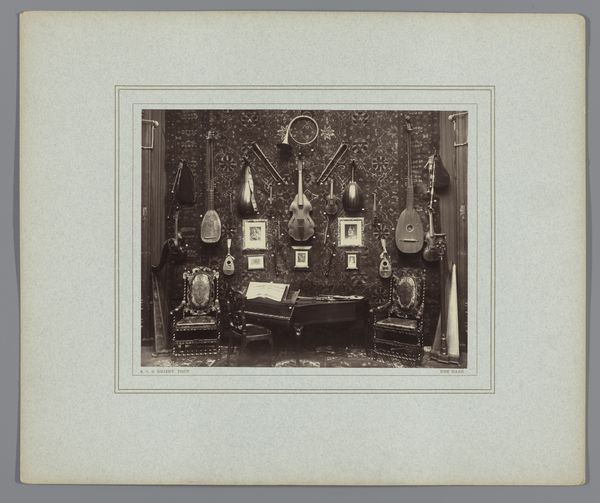
photography
#
photography
#
orientalism
#
islamic-art
#
genre-painting
Dimensions: height 161 mm, width 210 mm
Copyright: Rijks Museum: Open Domain
Curator: Alright, let's dive into this intriguing photograph attributed to Albert, taken sometime between 1860 and 1900. It's titled "Interior of a house in Tunis". My initial impression? An intense tranquility, strangely captivating. Editor: Tranquility is the last word that springs to my mind! I’m struck by the visual busyness, the overwhelming pattern of the tiled walls and arches, and the weight it puts on the image, the sitter, the room itself. It certainly speaks volumes about orientalism. Curator: You're right, there is an intensity there. The photograph really saturates the visible plane, every possible space seems accounted for. But still, for me, it evokes an internal quietude... What's that about? Perhaps the photographer hoped it conveyed an opulence and aesthetic refinement available to some, but hidden from others? Editor: Perhaps. Think about the context—a European photographer venturing into North Africa, capturing what they perceive as "exotic." The "genre painting" tag seems apt because of the artificial quality here, where there’s more stage setting than candidly observing life, a sort of exotic staging... a performance, maybe? Curator: Ah, I see. The photographer is selling an imagined, idyllic, private luxury. One gets a strong sense that whoever really occupies this space would have an altogether different experience, or a different way of encountering these surroundings. The palm suggests a yearning to bridge an outside, and inside; a sort of dream in real life! Editor: Absolutely. Consider how these images circulated in Europe, fueling colonial fantasies. These photographs, seemingly innocuous, played a role in constructing narratives of dominance and otherness. They romanticize and "safe-ify" a culture. It becomes a spectacle, divorced from reality. Curator: That is a powerful point. A constructed, carefully cultivated "reality." Even the placement of the divan, the strategic position of the vase, how light itself is handled—these all reinforce an intended reading of the depicted space. But what escapes the colonial gaze here, I wonder? Is it something we will never access? Editor: What escapes are the stories, the agency of those within the space. This photograph acts as a record but cannot contain the lived realities. A home isn’t just décor, and there’s something violent about reducing it to only that. It’s important to ask whose story gets told, and how it’s framed, especially within legacies of colonialism. Curator: This conversation makes the photo feel unsettled, fraught with questions... That said, it sparks curiosity—maybe not of an “accurate” past, but of the narratives we build around it. Editor: Right. The point is to use that discomfort to dismantle preconceived notions and decolonize our perspectives, hopefully moving closer to hearing a multiplicity of stories about belonging.
Comments
No comments
Be the first to comment and join the conversation on the ultimate creative platform.
